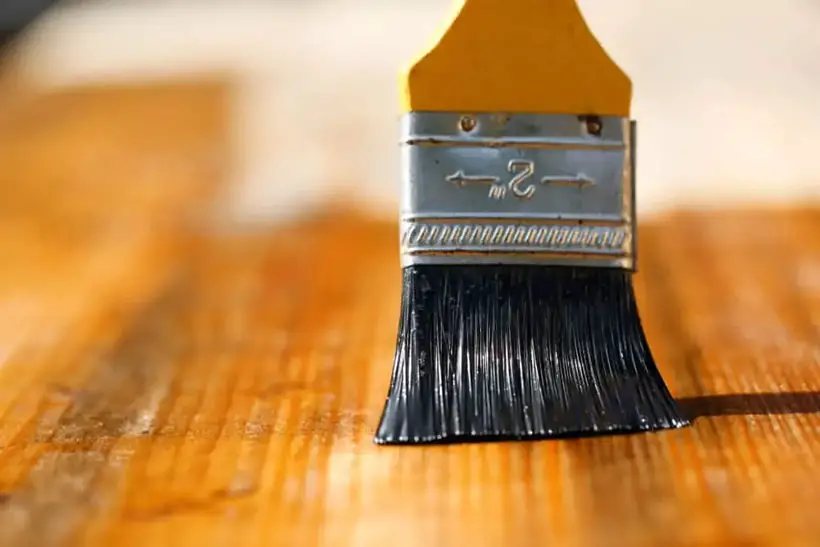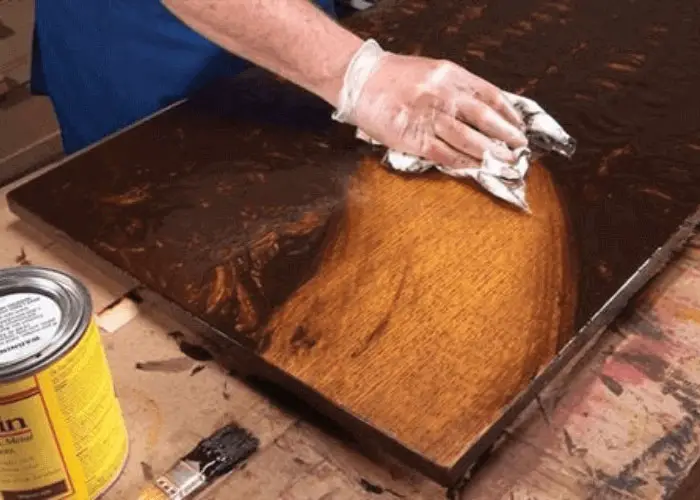Can You Put Polyurethane over Shellac? Everything You Need To Know
We all strive to make our house visually appealing. When it comes to wooden furniture finish, two particular materials come into our mind first: polyurethane and shellac. And by becoming overprotective, some of us use polyurethane over shellac.
But can you put polyurethane over shellac to make it more strong? No. You should not put polyurethane over shellac directly due to the difference in their properties. Doing so will destroy the finishing of the furniture.
In this article, we explore this context in detail while finding options and ways to put polyurethane over shellac. Let’s check those out.
Can You Put Polyurethane Over Shellac? Why Not?
As we said, you cannot put Polyurethane over Shellac. While polyurethane and shellac are both popular wood finishes with individualistic properties, combining them welcomes problematic issues. Below are the associated reasons for you not to use polyurethane over shellac.

Chemical Interaction
In terms of chemical compositions, polyurethane, and shellac are totally different. Shellac is a natural resin-based finish. It is natural and made of lac bugs. On the other hand, polyurethane is a synthetic finish made of plastic resin.
The differing chemical properties of these finishes make it difficult for them to adhere to each other. So, if you use polyurethane over shellac, you have to face some problems, such as poor adhesion, imperfect finish, and flaking.
Shellac is Smooth
Your furniture’s surface with a shellac finish is super smooth. This shellac finish surface does not have the texture or, you can say, “tooth” to grip the components of polyurethane.
Here, we must mention that polyurethane typically requires a rougher surface to ensure optimal adhesion. Applying polyurethane directly over shellac results in a weak bond. It can cause the finish to peel or chip over time.
Compatibility
When you use shellac on your furniture, the particles of shellac are dissolved in alcohol. Now, to coat the shellac, you have to use mineral spirits to thin up or clean polyurethane. You see, there are two different solvents that are going to be used.
So, when polyurethane is applied over shellac, the solvents in polyurethane reactivate the shellac. It leads to a breakdown of the finish while compromising its integrity.
Visual Inconsistencies
We use wood finishes to ensure that the furniture or wooden items look appealing. But when polyurethane is applied over shellac, the two finishes do not blend seamlessly. This eventually results in visual inconsistencies while welcoming undesirable final appearance.
Potential Compromises in Aesthetics
Shellac is a delicate and versatile finish that can be easily repaired or renewed. But if you apply polyurethane over shellac, you have limited options for future maintenance or changes in the finish.
Once you use polyurethane, it becomes challenging to remove without damaging the underlying shellac.
How to Use Polyurethane Over Shellac?

We have already discouraged you from putting polyurethane over shellac. However, if you really want to, this section is for you. Below are the two processes that you can follow.
1. Polyurethane over Waxed Shellac
Below step-by-step guideline is applicable if you are using waxed shellac.
Step 01: Apply a thin layer of shellac using a brush or rag.
Step 02: Let the shellac dry overnight or as instructed.
Step 03: Lightly sand the dried shellac with fine-grit sandpaper to make the surface rough.
Step 04: Wipe off the sanding dust with a cloth dampened in mineral spirits.
Step 05: Stir the oil-based polyurethane and apply a thin coat.
Step 06: Let the polyurethane dry according to the instructions.
Step 07: Repeat the process of applying the first coat of Amber Shellac after the polyurethane has dried.
Step 08: Gently sand the shellac layer to help it stick better.
Step 09: Wipe away the sanding dust with a cloth dampened in mineral spirits.
Step 10: Apply more thin coats of polyurethane, following the recommended drying times.
Step 11: Apply two to three additional coats of polyurethane for a smooth finish.
Step 12: If needed, lightly sand between coats to fix any imperfections. Remove dust before applying the next coat.
2. Polyurethane over Unwaxed Shellac
Below step-by-step guideline is applicable if you are using unwaxed shellac.
Step 01: Mix the unwaxed shellac flakes with alcohol.
Step 02: Let the mixture sit and stir until it dissolves.
Step 03: Strain the mixture to remove any impurities.
Step 04: Make sure the wood is clean and dry.
Step 05: Apply a thin, smooth coat of the unwaxed shellac to the wood.
Step 06: Let the shell coat dry completely.
Step 07: Gently sand the surface using fine-grit sandpaper.
Step 08: Wipe away the sanding dust with a damp cloth and let the wood dry.
Step 09: After the final coat, complete the sanding process again.
Step 10: Ensure the wood is clean and dry.
Step 11: Follow the instructions to apply a coat of polyurethane.
Step 12: Allow the polyurethane to dry thoroughly.
Watch this YouTube video to visually understand how you can put polyurethane over shellac:
FAQs
Here, we answer some of the most common questions.
Q: How many coats of shellac before putting polyurethane?
You should put in at least two coats before putting in polyurethane. Remember to allow ample time for the shellac to become dry.
Q: What finishing material can be put over shellac?
The best material is transparent polyurethane to put over shellac. It will also enable the waterproofing characteristics of the wooden product.
Q: Why should one think about using shellac under polyurethane?
Shellac is the ideal sealant for wood because of its superior blocking properties. It solves problems and enhances outcomes when used under multiple coats of polyurethane or other finishes.
Final Words
We hope the question of can you put polyurethane over shellac is answered properly. While it is not recommended to apply polyurethane over shellac directly, there is a solution to make them work together. By following the step-by-step guidelines you can create a compatible surface for polyurethane.
Nevertheless, it does not guarantee a fine-looking finish for the respective wooden item. However, please remember to always read and follow the instructions provided by the manufacturers of both finished materials to ensure the best results.




